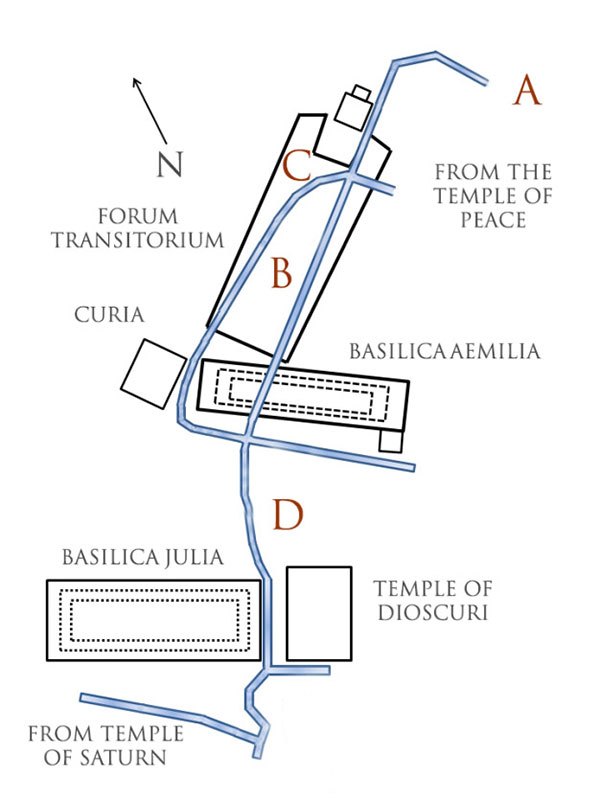Roman Building Projects
A Marker of Social Organization and Military Success
Republic
Cloaca Maxima
- Initially built as a monumental, open-air, fresh-water canal during the Regal (archaic) era by the last 3 kings of Rome (6th century BC)
- The Cloaca Maxima transformed a valley that was marshy, often inundated and, therefore, unusable, into a monumental public space where the commercial, political and religious business of the city could be transacted
- It guided a stream across the valley, toward the Tiber River
- Over time, the drain was extended and additional branches created
- By the Republican period, it was covered over and its function expanded to not only drain water away from the valley but also to carry away the effluent of the city. Thus it became a drain and a sewer
- Augustan Section
- Closed Augustan Section
- Domitianic Section
- Archaic Section
The project began during the Regal (Archaic) period as a drain. During the Republican period, the drain was covered over and turned into a sewer. Archeologists can tell the difference between the different time periods by the construction methods used. What is most important to remember, the drain made the valley useful for use as a forum.
This drawing is based on the one found in Hopkins’ article Hopkins, JNN. The Cloaca Maxima and the Monumental Manipulation of Water in Archaic Rome The Waters of Rome 2007(4):1-15.
Cloaca Maxima as it looked during the archaic period. From Digitales Forum Romanum; www.digitales-forum-romanum.de/gebaeude/cloaca-maxima/?lang=en. Accessed 05.03.16.

